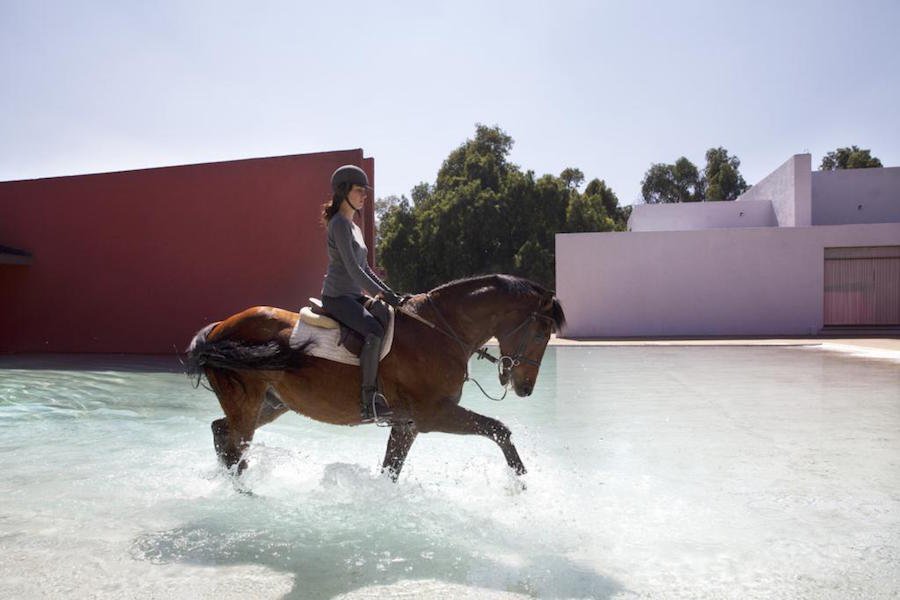What Makes a Great Equestrian Estate
Luxury Defined asks the experts in the Christie’s International Real Estate Affiliate network to share their insights
Luxury Defined asks the experts in the Christie’s International Real Estate Affiliate network to share their insights
What do serious equestrians look for in a great estate? Is a spectacular setting or a particular architectural style most important, or do specialized training grounds take top priority? While there is no single answer to this question, real estate specialists from around the world all point to key factors such as space and location when it comes to catering to property seekers who are horse owners, whether such buyers are serious competitors or simply devoted amateurs.
Equestrian estates are often complex and challenging to develop, and riders need access to equine-related services nearby. This is why such estates tend to be clustered in “horse country,” exclusive areas where numerous facilities cater to the needs of all types of horses and horse owners. From the polo grounds of Argentina and Uruguay to the dressage facilities of Great Britain, “horse country” in all its variations provides great equestrian estates with exceptional settings in which equines can be raised and trained. “At the highest levels, equine athletes, because of their size and scope and intelligence, require space,” says Rick Moeser, Executive Director of the Southeast Region for Christie’s International Real Estate. According to Moeser, “state-of-the-art luxury facilities that are turnkey” have been proven to be very successful.
1. A Rarified Global Market
Incorporating equestrian elements into an estate’s design involves much more than a typical property addition like a swimming pool or a garden; the extensive grounds and equipment required for horses tend to shape the design of an entire property from the ground up. “Great equestrian estates need a manor house, a proper old-fashioned stable yard, [and] state-of-the-art facilities,” says James Mackenzie, head of Strutt & Parker’s Country House Department in England. “Often, these horses are hugely expensive and are treated like five-star hotel guests.” This is one reason why equestrian estates tend to remain in families for decades, and even generations, according to Francisco Ballester of Rimontgo in Spain. “These types of equestrian properties are… a family business, so they rarely go on sale,” Ballester says. This also makes them relatively rare on the market. “Equestrian estates are a luxury product, often owned by old English families,” adds Mackenzie. “They are expensive to run, which means at some point they have to be sold, quite often to the international market with buyers coming from Dubai, Oman, and Qatar.”
2. Stand-Out Estates
What tends to separate good equestrian estates from great ones? According to Tom Heatherman of Michael Saunders & Company in Florida, the key is to combine vast acreage with proximity to equine trails, state parks, and an equestrian community where one is likely to find specialist services for horses. Such singular communities include Panther Ridge and Sarasota Ranch Club, both of which are located in Florida. “The beauty of buying in large-acreage communities whose residents have a shared interest in horses is that all the people and services you need to keep your horse(s) happy and healthy tend to be clustered nearby,” says Heatherman. “Some of the people or businesses you ideally want nearby include equine veterinarians, equine dentists, farriers, tack stores, hay and feed supply stores, good boarding and training centers, reputable breeders; and, yes, even massage therapists for your horses’ aches and pains.”
3. Design Elements
Equestrian estates also hold special appeal for those with an interest in architectural history. This estate in Javea, Spain on the Mediterranean coast offers both vast acreage and a beautiful residence with much of its original detail, from hand-painted ceramic tiles to exposed wood beams, intact. And when it comes to horses and physical space, more is always better, says Francisco Ballester of Rimontgó in Spain.
Similarly, Moeser adds, “The ideal equestrian property should have structures capable of housing at least 10 heated stables with minimum dimensions of 4×4 meters [about 170 square feet] with specific spaces for harness storage, the cleaning and horseshoeing of the horses, veterinary services, and an office for the caretakers.” The special features found in equestrian estates also depend on what part of the world they’re in. “In Florida, for instance, you need a covered arena because of the hot sun while in New England you need an indoor arena; otherwise, you would only be able to ride the [few] months out of the year when there is no snow.”
4. Who are the Buyers?
“There are two distinct bands of buyers [for equestrian estates],” says James Mackenzie of Strutt & Parker. “The first is a country house buyer who wants stables and 10 acres for their own horses and their children’s ponies. The second type of buyer is looking for a readymade equestrian enterprise. Normally they are competing, whether that’s racing or dressage, and [want] the full works, from racing yards and horse walkers to solariums, even horse swimming pools! This is really the top end of the market.” In 2015, for example, Strutt & Parker sold the Manton Estate, which is the largest racing establishment in the United Kingdom, for a price exceeding £26m. Such estates are the rarest of the rare: while many buyers seeking equestrian facilities are devoted riders in search of quality and location, a select few approach it as a business, and for this group, there are just few stand-out estates in the entire world that will do.
